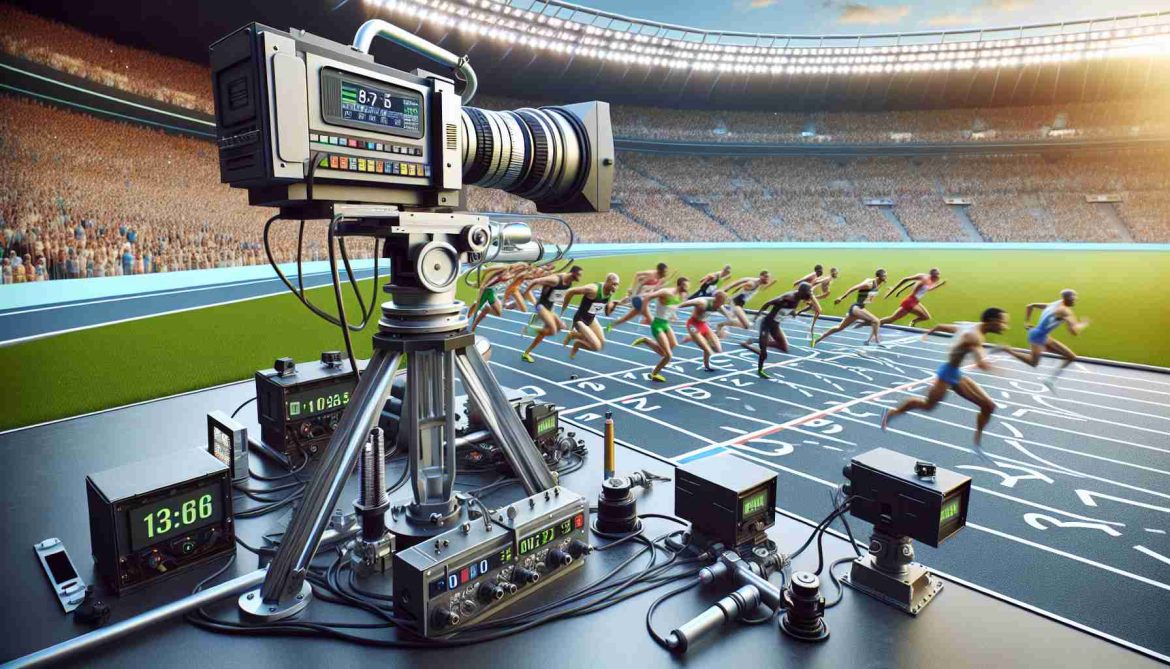In a crowded pizza joint far from the Olympics stage, spectators watched in amazement as the two top sprinters in the world vied for the gold medal, with just a hair’s breadth separating them. It was a moment that showcased the incredible precision of technology in capturing close finishes.
The intricate process of capturing these high-stakes moments involves cutting-edge technology like the Omega Scan’O’Vision, a line-scan camera that records the finish line one pixel at a time. This detailed approach allows for precise measurement and analysis, crucial in determining the winner of such tight races.
Gone are the days of film cameras and mechanical processes; today, digital cameras take rapid-fire sequential images to freeze the action in time. The evolution of such technology has revolutionized how we perceive and analyze sporting events, providing insights that were once unimaginable.
While many may be surprised to see athletes like Noah Lyles donning a watch during these intense races, the data-driven world of sports analysis reveals that it has no negative impact on performance. In fact, Lyles’ victory and newfound title as “the fastest man in the world” stand as a testament to the symbiotic relationship between athleticism and cutting-edge technology.
As we celebrate these moments of athletic brilliance, it’s also a nod to the relentless pursuit of innovation and precision that drives the world of sports technology forward, capturing and immortalizing split-second victories for audiences around the globe.
Unveiling the Unseen: Deeper Dive into the Technology Behind Capturing Close Olympic Finishes
The nail-biting finishes at the Olympics are not just about raw athleticism but also a testament to the marvels of modern technology that help determine the fraction of a second that separates champions from contenders. While the Omega Scan’O’Vision camera system has rightfully taken the spotlight for its role in capturing close finishes, there are additional fascinating aspects to consider.
What are the key challenges associated with capturing close Olympic finishes?
One of the primary challenges lies in ensuring the synchronization of multiple cameras positioned along the finish line to capture simultaneous images from various angles. The real-time processing of these images to identify the exact moment when the athletes cross the finish line accurately adds another layer of complexity to the process.
How accurate is the technology in determining the winner of tight races?
The cutting-edge technology employed in modern sports photography boasts remarkable precision, with the ability to measure distances down to the millimeter. This high level of accuracy is crucial in resolving disputes and declaring the rightful winner in races where the margin of victory is a mere fraction of a second.
What are the advantages and disadvantages of relying on technology for close finishes?
On the positive side, advanced technology eliminates human error and provides indisputable evidence in determining race outcomes. It offers viewers a clear and transparent view of the results, enhancing the overall spectator experience. However, there are concerns about over-reliance on technology and the potential for technical malfunctions or errors that could impact the integrity of the competition.
As the world of sports technology continues to evolve, the role of innovation in capturing close Olympic finishes remains a captivating topic that bridges the gap between athleticism and high-tech precision.
If you want to explore further insights into sports technology and innovation, visit Olympic.org for a comprehensive look at the technological advancements driving sporting excellence on the global stage.



